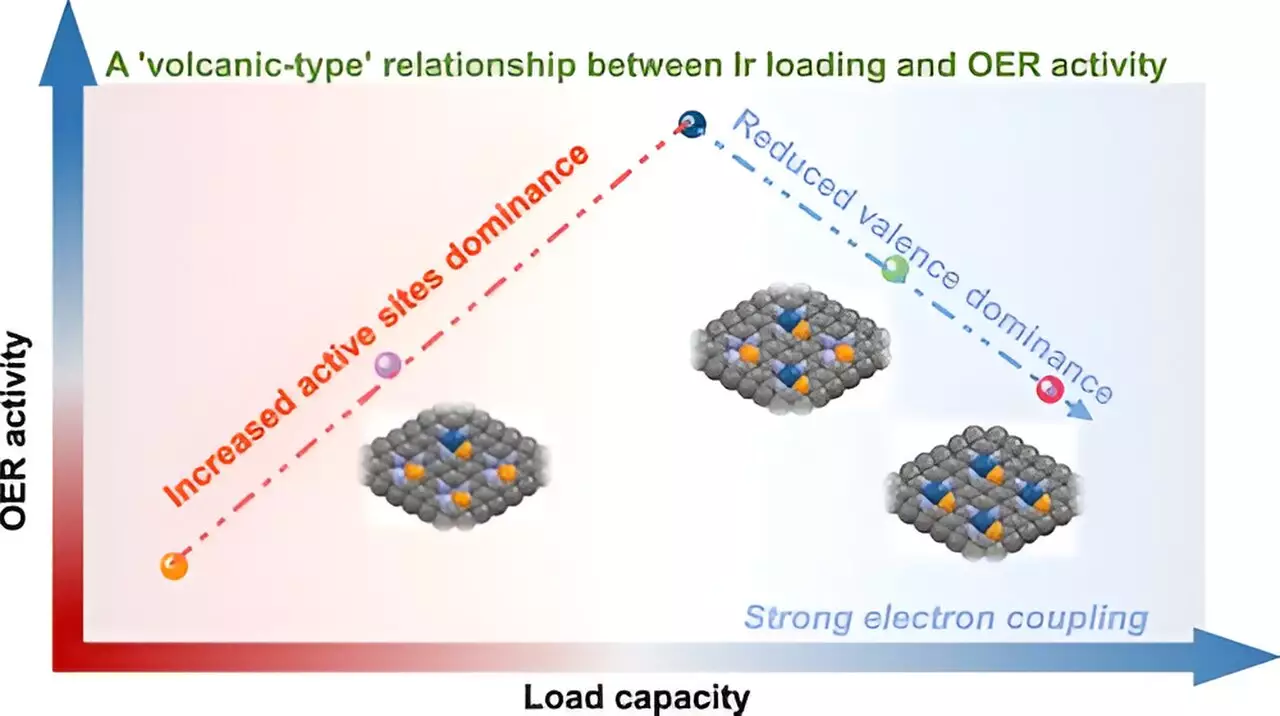Single-atom catalysis has revolutionized the landscape of chemical reactions, yet it is fraught with challenges that demand innovative solutions. Researchers, particularly from the University of Science and Technology of China, are addressing these complexities, aiming to create catalysts that operate efficiently at the atomic level. The intricacies of fabricating these catalysts often limit their effectiveness, especially when higher metal loadings are required. Understanding the dynamics of how metal catalysts perform at differing loadings is crucial not only for advancing technology but also for making catalytic processes more sustainable.
Insights from Recent Research
A recent study led by Prof. Yan Wensheng delves into this issue, highlighting a fascinating concept known as the “volcano-type” relationship. This term describes the correlation between metal loading in catalysts and their efficiency during the oxygen evolution reaction (OER) when acidic conditions are present. Traditional beliefs held that increasing the amount of metal in a catalyst would directly enhance its catalytic capabilities; however, this new research reveals that the reality is much more nuanced. The use of P-anchoring strategies to develop Ir single-atom catalysts showcases how high loadings of metal can lead both to augmentation and diminishment of catalytic activity.
A Revolutionary Approach to Metal Coordination
A key finding from this research is the discovery of an Ir-P coordination structure, which plays a pivotal role in stabilizing individual Ir atoms when metal loadings are increased to significant levels. By employing advanced methods such as synchrotron radiation XAS spectroscopy, researchers were able to monitor the electronic interactions at the molecular level, shedding light on the delicate balance between effective metal dispersion and catalytic activity. This coordination not only prevents the aggregation of Ir atoms—a major hurdle in designing high-performance catalysts—but also facilitates a nuanced understanding of how these interactions affect overall function.
The Volcano Effect: A Double-Edged Sword
The core discovery surrounding the “volcano-type” relationship illustrates a complex interaction between metal load and catalytic performance. Initially, increasing metal loading enhances the number of active sites, thereby boosting OER activity. However, once the metal loading surpasses a critical threshold, adjacent Ir atoms begin to interact more intensely, resulting in decreased catalytic efficiency. Essentially, too much of a good thing can lead to a detrimental cascade: as the valence state of Ir diminishes, intrinsic reactivity suffers. This profound insight changes the narrative for researchers looking to optimize catalyst designs, moving away from simplistic models toward a more layered understanding of catalyst behavior.
Implications for Future Catalytic Design
The research conducted by Prof. Wensheng’s team exemplifies the potential for design innovations in the realm of single-atom catalysis. By providing theoretical guidance and experimental validation, this study paves the way for more efficient and cost-effective catalysts, with potential applications extending far beyond the OER. The implications are far-reaching, suggesting new strategies for not just the current realm of catalysis, but also for future developments in catalytic processes across various sectors. Understanding the interplay of metal loadings and their corresponding catalytic activity could redefine best practices in catalyst design.

